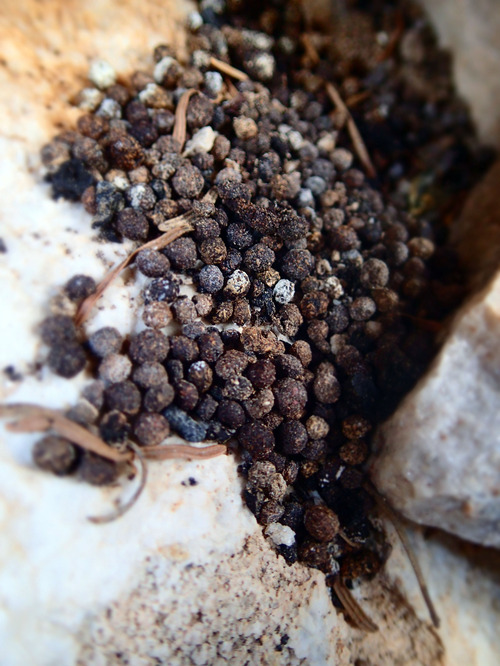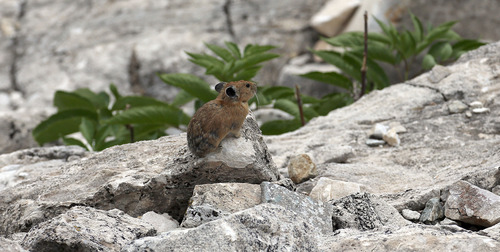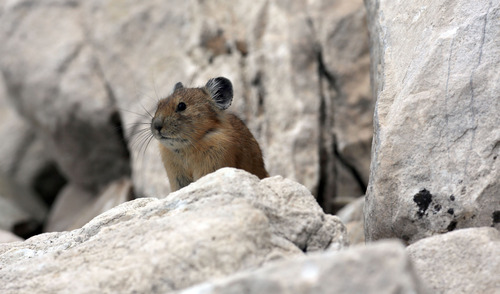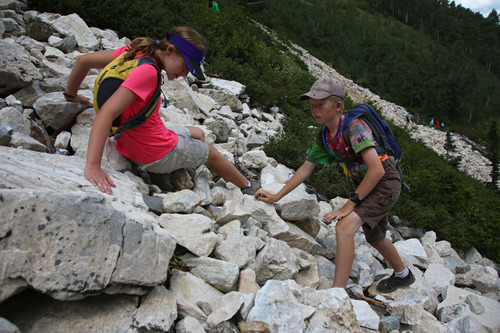This is an archived article that was published on sltrib.com in 2013, and information in the article may be outdated. It is provided only for personal research purposes and may not be reprinted.
Brighton • Pikas have been Carvel Harward's hiking buddies for years. He enjoys trying to spot the timid, but sometimes loud, creatures among the high-elevation rock fields he visits frequently.
After years of looking for the small mammals casually, Harward took the opportunity to join a new citizen science project to count pikas in Big Cottonwood Canyon.
"Throughout my life I have frequented pika territory. It is where I like to be in general. This is an opportunity to do something that might help pikas and the welfare of the ecosystems," Harward said after attending a pika survey field trip near Twin Lakes.
The trip was set up by the Utah Environmental Congress after a member of the board of directors suggested that the nonprofit environmental and wildlife group follow the lead of a similar project in Montana.
"She suggested last spring that UEC do some pika surveys as good field trips for our members and supporters," said Bob Brister, membership coordinator with the Utah Environmental Congress. "We intend to collect good data for the pika surveys to add to the work others are doing in the West. In addition to the data, we are engaging Utahns in meaningful research that may be helpful for the conservation of this species imperiled by warming climate."
American pikas, the smallest member of the rabbit family, live in the highest elevations of the western United States.
They are extremely sensitive to heat and may die in sustained periods of air 80 degrees and higher.
Brister reported that a group of volunteers ranging from seniors to 10-year-olds counted five and heard six pikas last weekend. Pikas can be hard to spot as they dart in and out of the rocks on the talus slopes where they reside. They are more easily heard, issuing a warning call when visitors are in the neighborhood. UEC is leading another pika survey in the Twin Lakes area this Sunday.
Kim Hersey, a native terrestrial biologist for the Utah Division of Wildlife Resources, said pika monitoring programs across the state show the mammals seem to exist everywhere records indicated they were historically.
"They are a critter we are concerned about, but so far data hasn't shown any specific problem," she said. "Having more boots on the ground and more eyes out there doesn't hurt. We welcome any data they are willing to share."
Wildlife biologists have plots in pika habitat on mountain ranges around the state, including at least two at the top of Big Cottonwood Canyon.
With the exception of the west desert ranges, four of the five subspecies of pikas can be found in Utah from the Bear River Mountains in the north to the La Sal Mountains in the south and even the Lava Point Area of Zion National Park.
Pikas are listed as a Tier III species on the Utah Comprehensive Wildlife Conservation Strategy developed in 2005.
The ranking means pikas are species of "conservation concern because they are linked to an at-risk habitat, have suffered marked population declines, or there is little information available regarding the ecology or status of the species."
Hersey said field work involving pikas is some of her favorite work.
"They live in beautiful areas and, from a personal aspect, they are one of the cutest animals out there," she said. "They are also incredibly charismatic for being such tiny animals."
The last state pika survey, basically tracking presence and absence, completed in 2011 showed pikas present at slightly more sites than in 2008, according to Hersey, who pointed out that two surveys do not constitute a trend.
If there is a trend developing, particularly in Big Cottonwood Canyon, Brister is hoping UEC contributes to its documentation.
"By taking part in research and observing pika first hand, people will have an experiential and personal connection to an animal being affected by climate warning and thus be more attuned to the need to address climate change issues," Brister said. "People who learn of the pika surveys find out about the climate change threat to wildlife in our own Wasatch Mountain 'backyard.' "
Twitter: @BrettPrettyman —
Count pikas in Big Cottonwood
The Utah Environmental Congress is leading a group of volunteers on a pika survey field trip near Twin Lakes in Big Cottonwood Canyon Sunday. The group will use smart phones and GPS units to record the locations and numbers of pikas spotted. Call UEC at 801-466-4055 or email bob@uec-utah.org for information about participating in the survey.

























